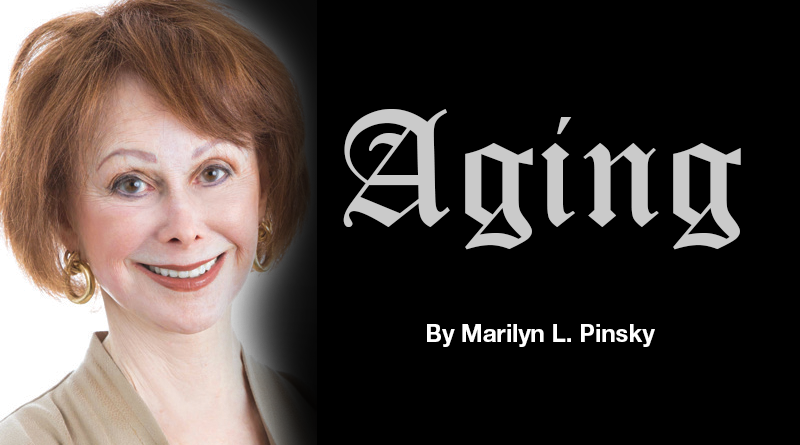Don’t Let Our Injuries Define Us
A new way to look at chronic pain
By Marilyn L. Pinsky
Editor’s note: This is the continuation of Marilyn Pinsky’s discussion with Katherine Beissner, dean of the College of Health Professions at SUNY Upstate Medical University.
In the last few decades, physical therapy has become an essential part of medical care. It often comes into our lives after an injury or an operation and the goal is to get us back to functioning the way we were before.
“The usual role of a physical therapist is to provide hands-on therapy to correct a problem and to teach patients exercises that they should do at home,” said Katherine Beissner, dean of the College of Health Professions at SUNY Upstate Medical University. “Recently, there has been a major change in the way we talk to patients, especially about chronic pain.
“Rather than focus on an anatomical cause of pain, we teach the patient about the nature of pain,” she added.
Sometimes called pain neuroscience education, this approach reconceptualizes how we think of our pain.
“Pain is like a fire alarm telling us that something is very wrong or that we are in imminent danger. This is very useful when we are on the verge of tissue damage (e.g., touching a hot stove) or in the acute stage of an injury. However, there is a major difference in acute pain and ongoing, chronic pain,” Beissner said.
“Look at chronic pain as our system going off track — like a smoke alarm that just keeps ringing even though the fire has been put out,” Beissner said. “Our pain system continues to be fired but it is not really serving the purpose of warning us of dangers. Hurt does not always mean that something is going on that can harm us.
“As we know from exercising, we can be sore but safe. We shouldn’t always assume that because we are getting a pain signal that something is wrong. Chronic pain is not doing us any good.”
Pain neuroscience education helps patients understand that chronic pain itself is not necessarily doing damage to the body, but that it is a “pain system problem,” Beissner said.
“If you have chronic pain, your doctor might refer you to a physical therapist to learn strategies to reduce pain and fear, improve movement and learn how to change your way of thinking about pain by learning how the nervous system functions,” she said.
What an exciting new option for chronic pain sufferers to explore.
Get on your feet!
There is not a day that goes by when there isn’t an article about the importance of exercise.
Easier said than done.
I asked Beissner: “How do you suddenly become an exerciser when you have not been athletic all your life?”
“It is helpful to know that there are stages of change, that if you understand them, can get you to the point of exercising,” she said. “When you’re first presented with the option to exercise, there is the pre-contemplation stage where you won’t even consider it.
“Second comes the contemplation change where you’re just giving it some thought.
“Third comes the preparation stage and you start to make a plan in terms of where and how to exercise, what to wear, what do you need to buy, etc. And then, before you know it, you’ve reached the action phase where you just do it.”
“Then there is the ‘fall off the wagon and get back on’ stage which is common and should not be looked upon as defeat but as just another stage to be overcome.”
What gets people to the contemplation stage in the first place?
“Fear is a great motivator,” said Beissner. “For instance, you or a friend gets a diagnosis of Type 2 diabetes or heart disease. You have heard the exact same message about the importance of exercising for years, but suddenly you realize that they’re talking about you. This perception of risk can either increase the likelihood of you taking action or you become so afraid that you start limiting what you do.
“It is this ‘fear of movement’ that gets you set in sedentary ways that causes problems.”
“And when you start feeling some aches and pains from exercising, don’t feel there is something terribly wrong and just stop,” Beissner said. “Look at the pain as a motivator to do more, but maybe do it differently. This is where a good physical therapist or trainer can help.”
Beissner said she is an advocate for annual physical therapy exams.
“We are not there yet as far as insurance reimbursement goes but in my mind it would be helpful as a prevention tool,” she said. “Go to a professional who works with all age ranges and who will meet you where you are in your exercise journey. Ask them for advice and recommendations for doing exercises differently or for new ones to try.”
“If it hurts to do land exercises, exercising in a pool is a good option,” Beissner added.
Vitality, an exercise program at the Institute for Human Performance at SUNY Upstate Medical University, or the YMCAs, the Jewish Community Center and other gyms with pools are all good sources with classes and instructors.

